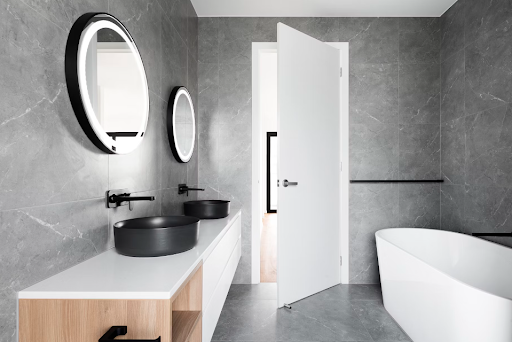Remodeling your bathroom can breathe new life into your home, enhance functionality, and increase property value. Whether you’re updating an outdated bathroom or creating a luxurious spa retreat, careful planning is essential for a successful remodeling project. Here are five key things to consider during residential bathroom remodeling.
1. Budget
Before starting a bathroom remodeling project, establish a realistic budget that aligns with your financial resources and renovation goals. Consider factors such as materials, labor costs, permits, and unexpected expenses when setting your budget.
Research the cost of materials and fixtures, obtain quotes from contractors, and factor in a contingency fund for unforeseen issues or changes. By establishing a clear budget upfront, you can prioritize spending and make informed decisions throughout the remodeling process.
2. Design and Layout
The design and layout of your bathroom play a significant role in its functionality, aesthetics, and overall appeal. Consider how you use the space and what features are essential for your lifestyle. Determine if you want to maintain the existing layout or reconfigure the space to better suit your needs.
Explore design options such as walk-in showers, soaking tubs, double vanities, and storage solutions to maximize space and efficiency. Work with a professional designer or contractor to create a cohesive design plan that reflects your style preferences and meets your functional requirements.
3. Plumbing and Electrical Considerations
During residential bathroom remodeling, it’s essential to consider plumbing and electrical requirements to ensure proper installation and functionality. Determine if any plumbing fixtures need to be relocated or upgraded, such as moving a toilet or installing a new shower.
Evaluate electrical needs for lighting, outlets, and ventilation, and ensure that wiring and fixtures comply with building codes and safety standards. Consulting with a licensed plumber and electrician can help you navigate these considerations and avoid potential issues during the remodeling process.
4. Material Selection
Selecting the right materials for your bathroom remodel is crucial for achieving the desired look, durability, and performance. Choose materials that are suitable for the unique conditions of a bathroom environment, such as moisture resistance, durability, and ease of maintenance.
Consider options such as tile, stone, quartz, and waterproof flooring for surfaces, and select fixtures and hardware that complement the overall design aesthetic. Keep in mind factors such as cost, longevity, and sustainability when making material selections for your bathroom remodel.
5. Accessibility and Universal Design
Incorporating accessibility features and universal design principles into your bathroom remodel can enhance safety, comfort, and usability for everyone, regardless of age or ability. Consider features such as grab bars, curbless showers, wider doorways, and lever-handled faucets to accommodate individuals with mobility limitations or disabilities.
Choose slip-resistant flooring and adequate lighting to prevent falls and improve visibility. Incorporating universal design elements ensures that your bathroom is functional and welcoming for everyone who uses it, now and in the future.
By following these tips, you can remodel your bathroom in the best way possible and also save some money while doing so.

Leave a Reply